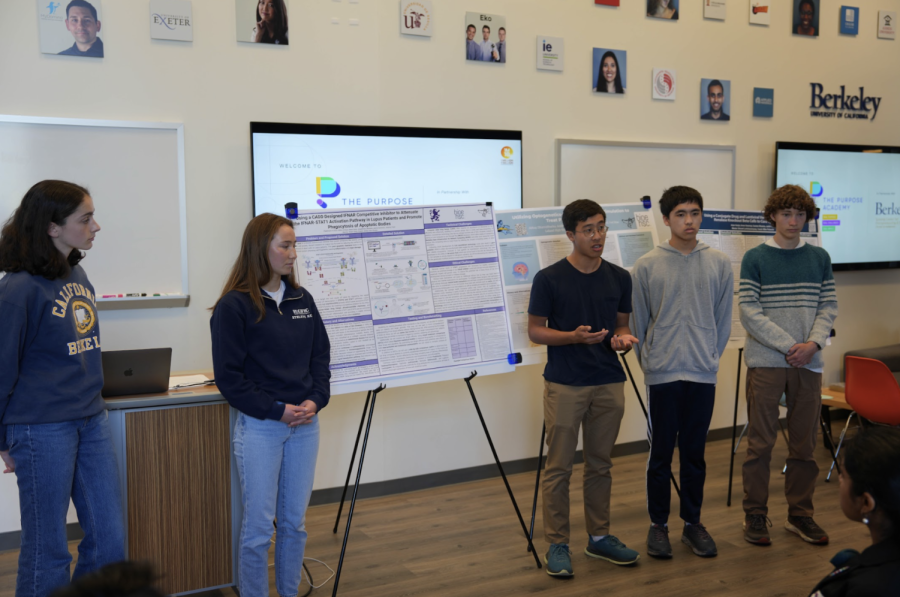PHS Students find success in Bioengineering Competition
Five PHS juniors placed second for their video submission in the 2023 BioEHSC, UC Berkeley’s bioengineering competition for high school students.
The team, Miles Antaya, Mark Hsia, Josephine Oesterer, Jamie Schwarz, and Jeremy Tuan, competed against 54 other teams from across the US and India. They created a video describing a theoretical solution to lupus they developed over the eight weeks of competition.
“We wanted to come up with a solution to an autoimmune disease that was not immunosuppressive, just to make treatment easier for patients,” Schwarz said. . “A lot of autoimmune diseases are treated with immunosuppressants, which pose additional risks for the patients because it makes them unable to get certain vaccines and are at a higher risk of getting different diseases,” she said.
In the beginning of the eight-week time frame, the team met during lunches and academies to work on their project. In the last four weeks, however, they met around eight hours per week just outside of school.
“We were all juniors and we knew each other, but having to spend so much time together made us even closer,” Schwarz said. “Our team dynamic was super fun.”
They spent this time working on an industry pitch, an academic presentation, and their video submission.
“[We were] nervous initially for the academic presentation because that’s like a 10 minute presentation. It’s more intense,” Oesterer said. “I think we had fun with the industry pitch because the stress was lifted after that.”
In both the academic and industry presentations, the team presented to small panels of judges and bioengineering industry professionals.
“I feel like it was all really fun. I think the best part was actually presenting our stuff and meeting all these cool people at their actual event because that’s when all our stress and hard work paid off,” Oesterer said.
The solution required multiple aspects, such as defining the problem, solution testing and benchmarking, ethical concerns, and technical challenges. They met with a UC Berkeley mentor every week to ensure progress was being made.
“[Our mentor] really wanted to steer us in a certain direction. But what was kind of cool about our group is we actually took a totally different direction,” Antaya said. “And it was kind of difficult because we kind of decided to diverge from what he was talking about. He really wanted to go into stem cells, and we really wanted to go into a more targeted cellular approach, specifically signal transduction.”
This team entered the competition with the goal of winning, but learned more than that.
“The biggest lesson I got out of it was how much more I learned about the field of science and biology overall,” Antaya said. “Like we went into it wanting to win and then we also learned a lot about working in a group. And we got to talk to a lot of people who are experts in the field and work in the pharmaceutical industry. I feel like that was really valuable.”
The team was invited back on April 21, along with other winning groups, to present their industry pitch at the UC Berkeley Sutardja Center for Entrepreneurship and Technology.
